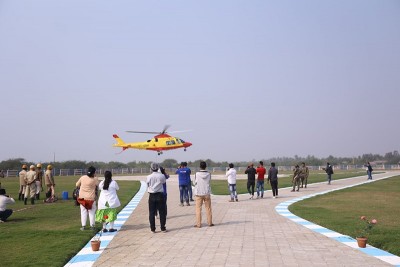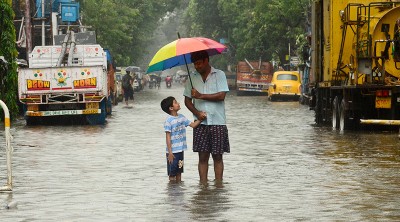 Earthquake
Earthquake
Newly identified tectonically active zone in Himalayas could alter earthquake study, predictions
New Delhi: The suture zone of the Himalayas or the Indus Suture Zone (ISZ) in the Ladakh region where Indian and Asian Plates are joined has been found to be tectonically active, as against current understanding that it is a locked zone.
This could have major implications in terms of earthquake study, prediction, understanding the seismic structure of the mountain chains well as its evolution.
A group of Scientists from Wadia Institute of Himalayan Geology (WIHG), Dehradun, an autonomous institute under the Department of Science and Technology, Government of India, have found through observations and detailed mapping of geological features that the suture zone of Himalaya that was conventionally thought to be locked is tectonically active.
They carried out the mapping of the remote regions of Ladakh that forms the most hinterland part of the Himalaya.
The study was published recently in the journal ‘Technophysics’.
The geologists observed that sedimentary beds are tilted and thrust broken, the rivers are associated with uplifted terraces, and the bedrock shows brittle deformation that occurred at much shallower depths.
These deformed geological features were then dated in the laboratory at Dehradun using a technique called Optically Stimulated Luminescence (OSL) (method for carrying Luminescence dating of geological sediments) and data of seismicity and denudation rate reviewed.
The combination of field and lab data suggested the region of the Indus Suture Zone (ISZ) has been neo-tectonically active since the last 78000 -- 58000 years and a recent earthquake in 2010 of low magnitude 4.0 near the village of Upshi that occurred due to a thrust rupture.Himalaya were known to be made up of north dipping thrusts like the Main Central Thrust (MCT), the Main Boundary Thrust (MBT), and the Main Frontal Thrust (MFT).
As per the established models, all of these thrusts except MFT are locked, and overall deformation in Himalaya is being accommodated only along with the MFT.
The new findings, which suggest a more remote fault at the suture zone being neo-tectonically active, could call for a serious relook into the existing evolutionary models using new techniques and a larger geological database.
Support Our Journalism
We cannot do without you.. your contribution supports unbiased journalism
IBNS is not driven by any ism- not wokeism, not racism, not skewed secularism, not hyper right-wing or left liberal ideals, nor by any hardline religious beliefs or hyper nationalism. We want to serve you good old objective news, as they are. We do not judge or preach. We let people decide for themselves. We only try to present factual and well-sourced news.







